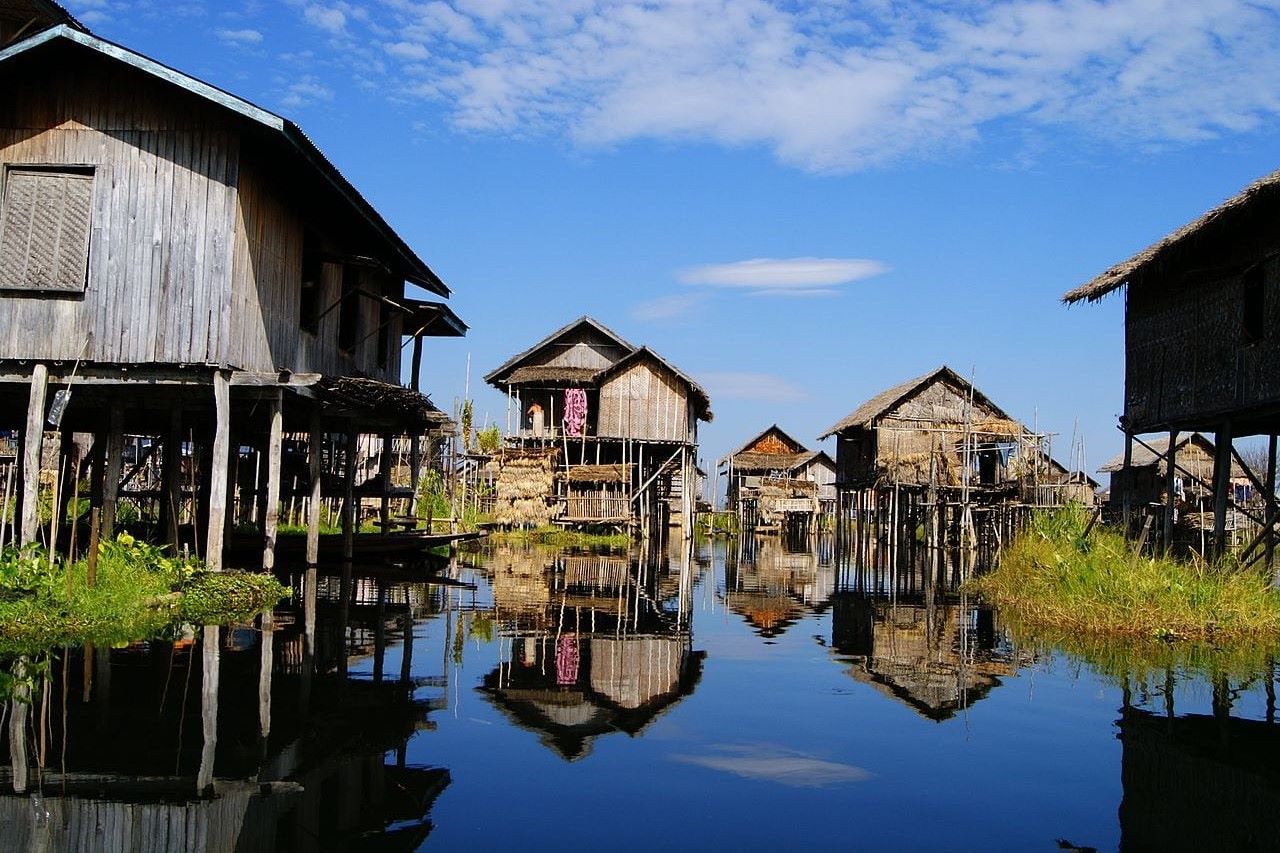Vibrant Floating Villages That Defy Convention

Have you ever imagined living in a house that floats on water? Floating villages are real places where people have built their homes on lakes, rivers, or even the sea. These unique communities offer a different way of life, blending traditional culture with the natural environment. From Cambodia's Tonle Sap Lake to Vietnam's Ha Long Bay, these villages are not only homes but also bustling hubs of activity. Residents fish, trade, and even farm on the water. Visiting a floating village can give you a glimpse into a lifestyle that defies convention and adapts to the rhythms of nature.
Floating Villages: A Unique Way of Life
Floating villages offer a fascinating glimpse into a lifestyle that defies convention. These communities, built on water, showcase human ingenuity and adaptability. Let's explore some of the most vibrant floating villages around the world.
Southeast Asia's Floating Marvels
Southeast Asia is home to some of the most captivating floating villages. These communities thrive on their unique relationship with water.
Kampong Phluk, Cambodia
Located on the Tonle Sap Lake, Kampong Phluk is a village where houses stand on stilts. During the rainy season, the water level rises, transforming the village into a floating wonderland. Residents rely on fishing and tourism for their livelihood.Inle Lake, Myanmar
Inle Lake hosts a network of floating villages where the Intha people live. They are famous for their unique leg-rowing technique and floating gardens. The villagers grow vegetables on floating beds made from water hyacinth and other plant materials.Kompong Khleang, Cambodia
Another gem on Tonle Sap Lake, Kompong Khleang is less touristy but equally fascinating. The village features stilted houses that rise up to 10 meters above the water. During the dry season, the stilts are fully visible, while in the wet season, the village appears to float.
Africa's Hidden Floating Gems
Africa also boasts some incredible floating villages that are rich in culture and history.
Ganvie, Benin
Known as the "Venice of Africa," Ganvie is a large lake village in Benin. The Tofinu people built this village on Lake Nokoué to escape capture by the Fon warriors. Today, it remains a bustling community with markets, schools, and homes all on stilts.Makoko, Nigeria
Often referred to as the "Venice of Lagos," Makoko is a floating slum in Nigeria. Despite its challenges, the community is vibrant and resourceful. Residents navigate the waterways in wooden canoes, and many homes and businesses are built on stilts.
South America's Floating Wonders
South America offers its own unique floating villages, each with distinct cultural significance.
Uros Islands, Peru
The Uros people live on artificial islands made of totora reeds on Lake Titicaca. These floating islands are anchored to the lakebed and can be moved if necessary. The Uros have preserved their traditional way of life, relying on fishing and tourism.Los Uros, Bolivia
Similar to their Peruvian counterparts, the Uros in Bolivia also live on Lake Titicaca. Their floating islands are constructed from layers of reeds, and they maintain a lifestyle that dates back centuries. The community is known for its intricate reed crafts.
Europe's Lesser-Known Floating Villages
Europe may not be the first place that comes to mind for floating villages, but it has some hidden treasures.
Giethoorn, Netherlands
Often called the "Venice of the North," Giethoorn is a picturesque village with canals instead of roads. While not a traditional floating village, its waterways and boat-centric lifestyle make it a unique destination. Residents and visitors navigate the village using whisper boats.Kotor Bay, Montenegro
Kotor Bay features several small floating villages where fishermen live. These communities rely on the bay's rich marine life for their livelihood. The stunning scenery and historic architecture add to the charm of these floating settlements.
Oceania's Floating Communities
Oceania also has its share of floating villages, showcasing the region's diverse cultures and traditions.
Wakatobi, Indonesia
Wakatobi is an archipelago in Indonesia known for its marine biodiversity. The Bajo people, also known as sea gypsies, live in stilt houses over the water. They are skilled fishermen and free divers, relying on the ocean for sustenance.Port Moresby, Papua New Guinea
In the capital city of Papua New Guinea, some communities live in floating houses along the coastline. These villages are built on stilts and connected by wooden walkways. The residents maintain a close relationship with the sea, relying on fishing and trade.
Embracing the Unique Charm of Floating Villages
Floating villages offer a glimpse into a way of life that is both unique and captivating. These communities, often built on stilts or floating platforms, showcase resilience and ingenuity. Visiting places like Kampong Phluk in Cambodia or Inle Lake in Myanmar provides an opportunity to experience daily life on water. From vibrant markets to traditional fishing methods, these villages are rich in culture and history.
Travelers can enjoy the stunning landscapes and warm hospitality of the locals. These destinations are not just about sightseeing but about understanding a different way of living. Floating villages remind us of the diverse ways people adapt to their environments. They are a testament to human creativity and perseverance. So next time you plan a trip, consider exploring these extraordinary communities. They offer an unforgettable experience that defies convention.

